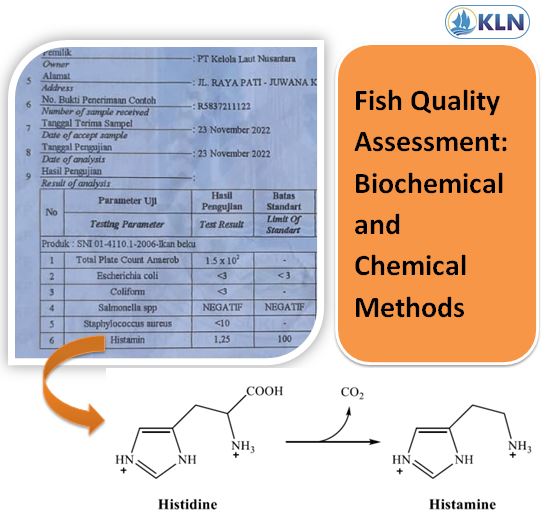Fish Quality Assessment: Biochemical and Chemical Methods
By. Najih - 10 Mar 2023
kelolalaut.com - Biochemical and chemical methods are useful in determining the composition of fish and also in detecting the deteriorations in the products. Fish decomposition occurs due to bacteria already present in the fish itself, bacterial growth, and cross contamination. A variety of chemical compounds or groups of compounds accumulate post-mortem fish muscles, and it produced by spoilage bacteria, produced by autolytic enzymes, produced by the deamination of amino-acids and nucleotide catabolites. These include measurement of moisture, protein, fat, ash or mineral content, and acid content in marinated fishes. Determination of metal contents such as mercury, lead, cadmium, zinc, and chlorinated hydrocarbons, coloring matters, additives, volatile basic amines, biogenic amines and oxidative rancidity. These preservatives are done by analytical methods that involve complex procedures.
Histamine has received most of the attention since it has been associated with incidents of scombroid poisoning in conjunction with the ingestion of tuna, bonito, and mackerel. Naturally occurring bacteria in fish produce an enzyme which converts histidine in the fish to histamine. Histamine contaminated fish often have a metallic, sharp, or peppery taste, smell bad, or have a "honey-combed" appearance. Histamine can be tested by HPLC (High-Performance Liquid Chromatography).
Be continued to third methods: physical methods








